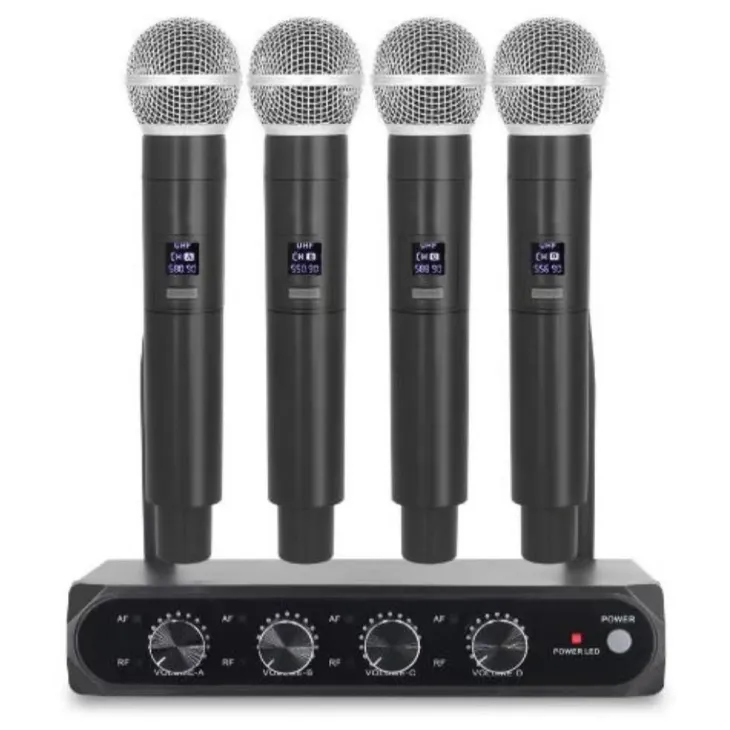
It was close to midnight. The only light in our sample room came from a bench lamp and the glow of the audio analyzer. On the desk sat a new 4-channel VHF wireless microphone set—from another factory—that my long-time Chilean client, Carlos, asked me to include as a trial alongside two models he’d already approved after Guangzhou Prolight+Sound.
I’d promised to screen every sample before shipment. So we rolled up our sleeves and got to work.

The Brief
Client shortlists 5 models from three suppliers at the show
Our two SKUs: ready to ship
Extra request: add one 4-ch VHF set “if it checks out in your lab”
The Test Bench (in our sample room)
Audio analyzer (frequency response / THD+N)
RF spectrum analyzer (carrier, adjacent channel, spurs)
Shielded RF box + variable attenuator (simulate distance/obstacles)
Reference preamp + studio monitors
Controlled Wi-Fi/RF environment for repeatable runs
What We Found (VHF sample)
Capsule: Cost-down 104 dynamic capsule.
Distance/Obstruction Test (attenuator ≈ 10–12 m equivalent):
RF Behavior:
Translation: On paper it looks “OK for the price,” but in real use it risks audible dropouts and dull top-end—exactly what ruins a show and a brand.

Side-by-Side vs. Our UHF (same budget class)
SNR & adjacent-channel rejection: UHF clearly stronger
Top-end extension: UHF retains 8–12 kHz detail and vocal air
Stability: No dropouts at the same equivalent distance/obstruction
We overlaid the curves on one screen. The difference wasn’t subtle.
The Call I Had to Make
I phoned Carlos:
“The VHF sample fails our distance and HF tests. I don’t recommend it. We can swap to our UHF model at the little higher budget, with cleaner highs and stronger RF resilience. I’ll send you a one-page report and clips.”

I emailed a concise PDF with:
Frequency response & THD+N plots
RF scans, dropout logs, test photos
A simple use-case matrix (stage/wedding/conference)
The Outcome
The next day, Carlos replied:
“Thanks for the data. Let’s drop the VHF and go with your UHF recommendation. Ship this batch, and we’ll align the rest of the lineup to your spec sheet.”
That order shipped on time—and the relationship grew stronger. We didn’t “sell more gear”; we protected a client from a risky choice with evidence.
What I Learned (Again)
Lab first, loyalty next. Trust compounds when you stop a bad purchase.
Data beats opinions. Curves, logs, and controlled video tell the story.
Spec ≠ sound. Cheap capsules + fragile RF = expensive field failure.
Offer an equivalency. “Same budget, better outcome” is an easy yes.
Document repeatability. Your process becomes part of your value.
If You’re Auditioning Wireless Mics
Ask your supplier for a sample-room test pack: frequency response, THD+N, RF scans, and a short obstruction/dropout clip. If you want, send me your shortlist—I’ll run the same protocol and return a side-by-side sheet you can forward to your team.
Let’s make sure the gear you buy is the gear you can trust—on stage, every time.
Contact Us:[email protected]